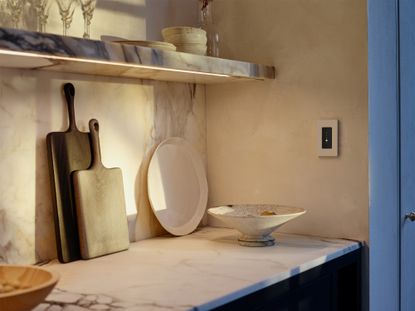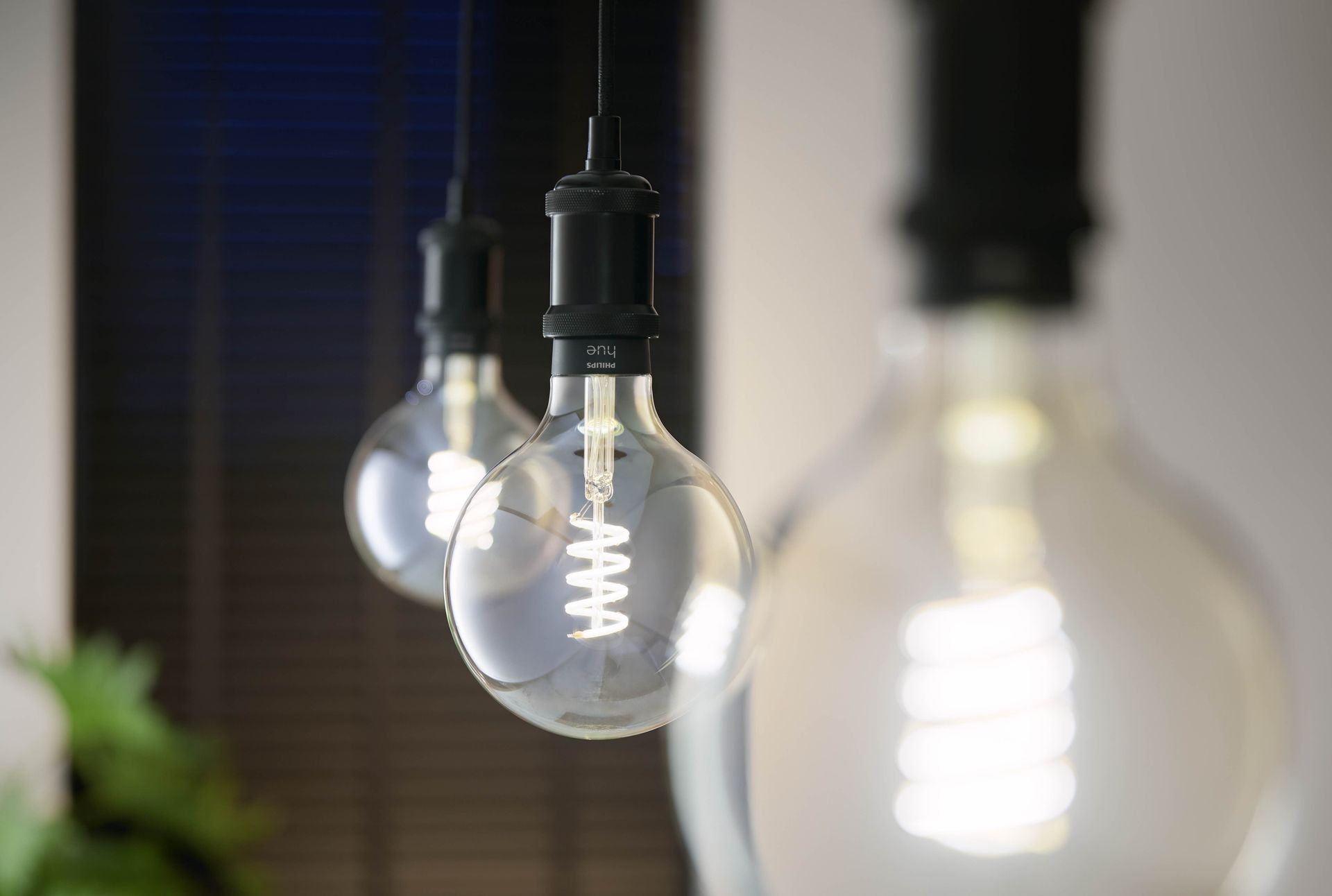Smart switches vs smart bulbs – which is the better choice for the modern smart home?
If you're looking to making your home's lighting smarter, deciding between smart switches vs smart bulbs is a good place to start


If you're just starting your smart home lighting journey, there's a decision you can make from the outset that can help guide you in the right direction: smart switches or smart light bulbs?
You might think that both of these pieces of smart home tech are cornerstones of a smart lighting set-up, but in reality, you don't necessarily need both in your home. In fact, they usually don't work well together when used in tandem on the same set-up.
The question is, which is better? Many smart home experts lean towards smart switches for various reasons, especially if you're serious about making your home smarter. However, as with anything, there are a variety of factors that will determine what's right for you.
Here, we give them a quick comparison, so you can get to grips with whether to invest in smart bulbs or smart switches.

Hugh is an experienced interiors and property journalist, who specializes in luxury modern homes. With that in mind, he's well versed on the ins and outs of the latest smart tech for homes, and how architects and designers are using it to complement their designs.
Are smart bulbs or smart switches easier to install?
When comparing smart switches and smart bulbs, there's installation and then there's set up to consider. Installation-wise, smart bulbs usually win out every time. Most smart bulbs just need to be screwed into an existing light fitting, and that's the entire scope of your installation. Most smart light switches, however, aren't wireless, and will need to be installed by a competent person such as a qualified electrician in place of existing light switches. You'll also need to check if your lighting set-up has a neutral wire or not, something that many, but not all, smart light switches require.
When it comes to setup, smart switches can have the edge in an automated home. If you're trying to make a whole room's lighting system smart, with smart bulbs, you'll need set each of these up individually. Some smart bulbs can be controlled directly from your mobile or tablet, while others will require a hub or bridge to also be set up.
I've also found that cheaper smart bulbs can become untethered from your smart lighting system easily, meaning that every once in a while, when you're trying to search for something in a dark space, your smart bulb is flashing in set up mode, which is less than ideal.
Once smart switches have been installed, they'll need to be joined up to your smart home system in much the same way, but can be used to control multiple lights and outlets.
Smart switches don't function in the same way as traditional three-way switches in a space, so only one switch can be used on a lighting circuit. However, you can easily add on additional "remotes", which effectively can act as a second wall-mounted switch, but also means you can control the smart switch from the comfort of your sofa, for example.

Which is easier to control?
The main problem with a smart bulb comes down to functionality. To access the smart bulb's functions, you'll need to control it by app, voice assistant, the likes of your Alexa skills or by some sort of hub. This is great in certain instances, but by having the smart functions in the bulb, rather than the switch, you encounter some issues, too.
Smart bulbs can be controlled using your traditional light switch, which means that they can function just like normal bulbs. However, this also means that if your light switch is turned off, your smart bulb can't be controlled remotely by app. To use smart bulbs, the switch has to remain in the "on" position, permanently. If you're using a smart bulb for something like making it seem like your house isn't empty when you're on vacation, this may be enough, but for everyday use, it's far from ideal.
A smart switch, however, can be controlled in more ways. You can make changes to your lighting as you would a traditional switch (but with more functions incorporated into the control panel), as well as by voice command and by app. This gives you a more practical control over your lighting, whereas smart bulbs could be seen to have more of a novelty factor.
Which have the best features?
The best smart bulbs and switches will have comparable features in terms of being able to set schedules, voice control, and link with your wider smart home. However, they don't crossover completely.
As smart switches make use of your standard bulbs (though hopefully energy-efficient LEDs at this point), they don't necessarily offer all of the same features we've come to expect from smart lighting, such as being able to change the color and temperature of the light. Some do, of course, but these tend to be as part of wider smart lighting systems, such as human-centric lighting designs.
Smart switches often include dimmers as part of their interface, meaning you control this from the room, as well as by app and voice command. Some smart switches can also be set to control outlets and other elements of your smart home, including ceiling fans.

Which looks better?
The biggest drawback of smart switches for the design-oriented is their looks. Although there are more colors and finishes available than ever, they still have a distinctly 'techy' look to them, which may feel at odds in certain spaces.
When hidden under a shade, smart bulbs look like any other bulbs, but even if you're looking at a lighting design that includes exposed bulbs, there are more and more options becoming available, even including squirrel cage-style Edison bulbs, such as these Philip Hue bulbs from Amazon.
Which is better value for money?
Smart switches are relatively budget-friendly and, in comparison to forking out for individual smart bulbs (where prices start at around $25 per bulb), switches offer a more cost-effective way to approach automated lighting.
Do smart switches work with smart bulbs?
Yes, and no. If you're buying a smart bulb for its ability to offer color changing to your space, you can still use it with a smart switch as you would a standard lightbulb, and control it separately through an app. Because of how smart bulbs work, using a smart bulb alongside a smart switch won't make the most of a smart bulb's features, as it still won't be operational when the light switch is turned off.
Certain smart switches have addressed this issue, however. The likes of Philips Hue's switches are designed to complement their smart bulbs, while something like Lutron Aurora from Amazon can be retrofitted onto a light switch, turning it into a smart dimmer, while also ensuring no one can turn off the switch manually.
Be The First To Know
The Livingetc newsletter is your shortcut to the now and the next in home design. Subscribe today to receive a stunning free 200-page book of the best homes from around the world.

Hugh is the Editor of Livingetc.com. From working on a number of home, design and property publications and websites, including Grand Designs, ICON and specialist kitchen and bathroom magazines, Hugh has developed a passion for modern architecture, impactful interiors and green homes. Whether moonlighting as an interior decorator for private clients or renovating the Victorian terrace in Essex where he lives (DIYing as much of the work as possible), you’ll find that Hugh has an overarching fondness for luxurious minimalism, abstract shapes and all things beige. He’s just finished a kitchen and garden renovation, and has eyes set on a bathroom makeover for 2024.
-
 What are the Most Comfortable Pillowcases? From Temperature Regulating to the Best for Your Skin
What are the Most Comfortable Pillowcases? From Temperature Regulating to the Best for Your SkinWhen you're looking for comfort in your pillowcases, material matters. These are the best you can buy
By Faaizah Shah Published
-
 5 Simple, but Genius Bathroom Layout Tricks That Will Make Your Space Work so Much Harder
5 Simple, but Genius Bathroom Layout Tricks That Will Make Your Space Work so Much HarderSmall switches to how you lay out your bathroom that help make the most of a small space
By Luke Arthur Wells Published

